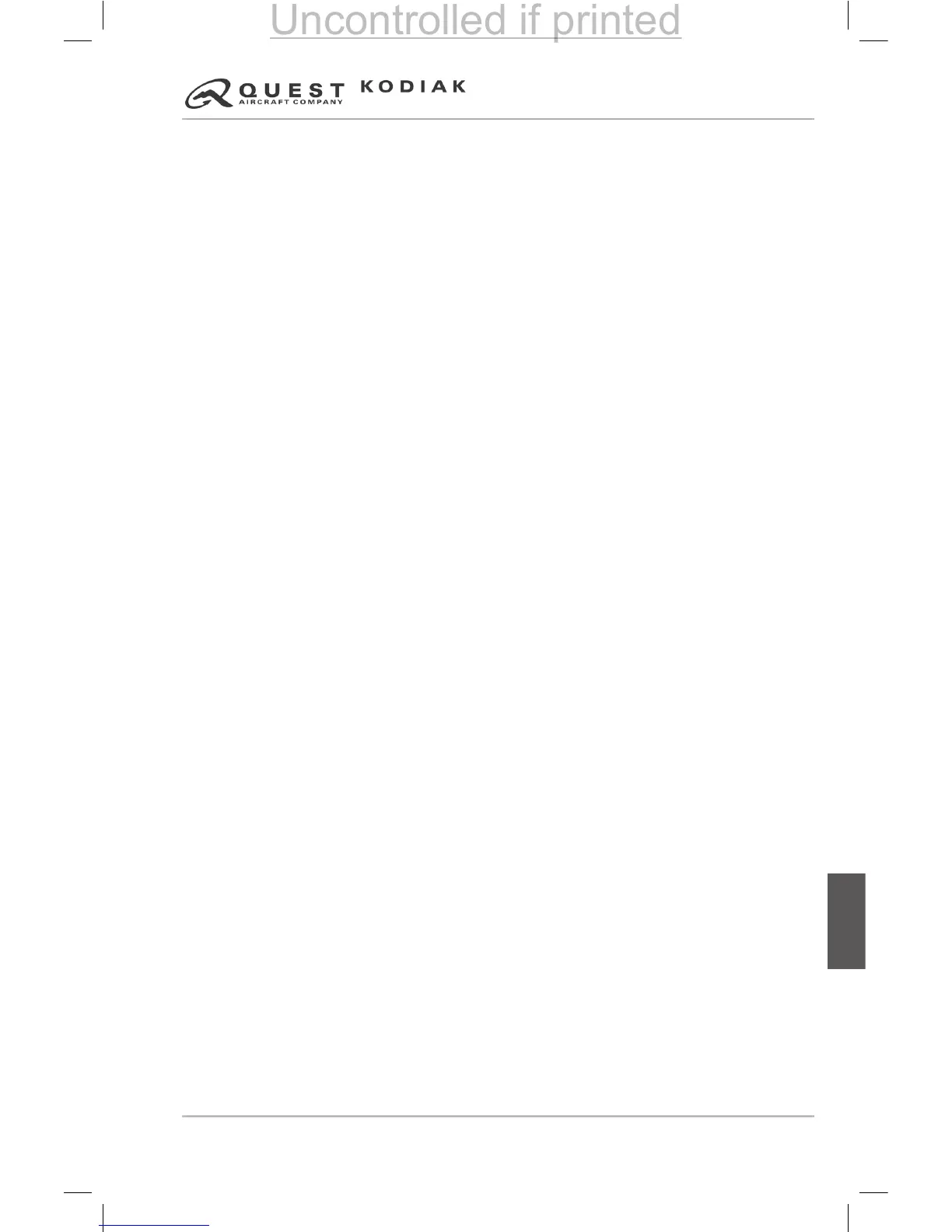EXHAUST SYSTEM
The exhaust system consists of two exhaust stubs attached to the left and
right sides of the forward section of the engine. The exhaust stubs are
designed to provide the most efcient removal of exhaust gas possible.
ENGINE FUEL SYSTEM
The engine fuel system consists of an oil-to-fuel heater, an engine driven fuel
pump, a fuel control unit, a ow divider and dump valve, a dual fuel manifold
with 14 simplex nozzles, and two fuel drain lines. The engine fuel system
provides the necessary fuel ow to accommodate the speed and power
demands of the engine.
Fuel is delivered from the fuel reservoir to the oil-to-fuel heater which utilizes
heat from the engine lubricating oil system to preheat the fuel prior to
entering the fuel control unit. A bypass valve in the heater regulates the fuel
temperature by either allowing oil to ow through the heater or bypassing it
back to the engine oil tank.
Fuel from the oil-to-fuel heater then enters the engine-driven fuel pump
through a 74 micron inlet screen. The inlet screen is spring loaded to allow
unltered fuel to ow into the pump chamber should the lter become blocked.
The engine driven fuel pump increases the fuel pressure and delivers it to
the fuel control unit through a 10 micron lter in the pump outlet. A
bypass
valve and passages in the pump body allows unltered pressurized fuel to be
delivered to the fuel control unit should the lter become blocked.
The fuel control unit consists of a fuel metering section, a temperature
compensating section, and a gas generator pneumatic governor. The fuel
control unit determines the proper fuel schedule to provide the required power
as selected by input from the power lever. This is accomplished by controlling
the speed of the compressor turbine. The temperature compensating section
alters the acceleration fuel schedule to compensate for variances in fuel
density at differing fuel temperatures, especially during engine start. The
power turbine governor, installed in the propeller governor housing, provides
power turbine overspeed protection in the event of propeller governor failure.
The temperature compensator portion alters the acceleration fuel schedule
from the fuel control unit to compensate for variations in the compressor inlet
air temperature (T1). Engine characteristics vary with differing compressor
inlet temperatures, and the acceleration fuel schedule must be altered to
prevent compressor stall and/or excessive Interturbine Temperatures.
The ow divider takes metered fuel from the fuel control unit and schedules
the ow between the primary and secondary fuel manifolds. The fuel manifold
assembly delivers fuel to the combustion chamber through 10 primary and
4 secondary fuel nozzle assemblies. During engine start, metered fuel is
delivered initially by the primary fuel nozzles. The secondary fuel nozzles are
enabled above a preset value. All of the fuel nozzles become operative at
and above idle power. During engine shutdown, residual fuel in the manifolds
is allowed to drain through a dump valve port into the EPA fuel reservoir,
where the residual fuel should be drained daily. If the reservoir is not drained
on a regular basis, it will overow onto the ground at engine shutdown.

